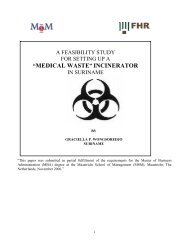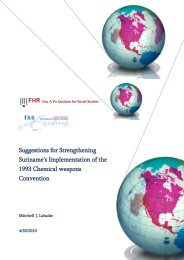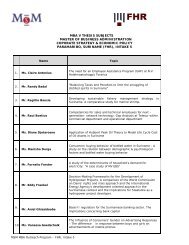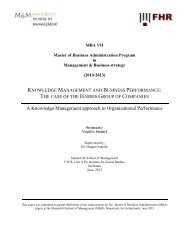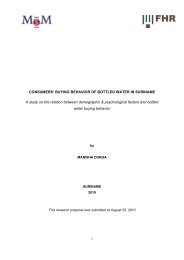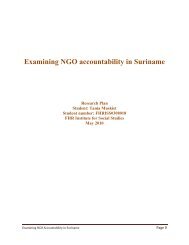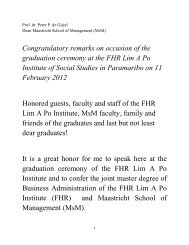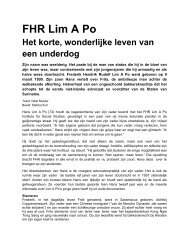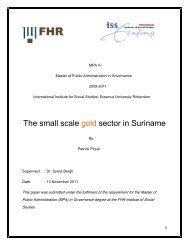MBA Thesis Daniella Griffith - Kranenberg.pdf - FHR Lim A Po ...
MBA Thesis Daniella Griffith - Kranenberg.pdf - FHR Lim A Po ...
MBA Thesis Daniella Griffith - Kranenberg.pdf - FHR Lim A Po ...
- No tags were found...
Create successful ePaper yourself
Turn your PDF publications into a flip-book with our unique Google optimized e-Paper software.
2 LITERATURE REVIEW2.1 IntroductionIn order to answer the research questions several steps need to be taken. One of these steps isviewing relevant theory about the concepts Organizational culture, Leadership, Jobsatisfaction and Organizational commitment which is done in this chapter. The theory ofSmall and Medium sized Enterprises (SMEs) is also explored because this is a different typeof organization. So the definitions and the characteristics of this type of organization are alsolooked at. A review of past findings on the relationships between the earlier mentionedvariables is presented and at the end of this chapter the theoretical framework for this studywill be presented.2.2 Concept of Leadership2.2.1 Leadership definedFor as long as there was interaction between people, leadership existed. The topic ofleadership has been the focus of studies for the past 20 years and gradually became a topic ofgreat interest. This interest sprung forth out of the fact that leaders provide guidelines andthey have to motivate their followers to accomplish tasks (Gill, 1998).Early on, leadership definitions had the tendency to view the leader as the center or the focusof a group activity. The leader restructures the problems, offers solutions to the problems,establishes priorities and initiates developmental operations (Bass B. , 1990). Leadership wasassociated with strength of personality (Bass 1990; Bowden, 1926). A leader was seen as aperson with many popular traits of personality and character (Bass, 1990; Bingham, 1927).The current descriptions of leadership no longer regard only individual characteristics ordifferences (Avolio 2007; Yukl 2006).In Bass’s (1998) current definition, leadership is an interaction between one or moremembers of a group. In another more recent definition, leadership is a relationship betweenleaders and followers where they influence each other and they intend real changes andoutcomes that reflect their shared purposes (Daft, 2005).According to Northouse (2007) leadership as a process means that, as mentioned earlier, it isnot a characteristic someone is born with, it is an interaction between leaders and their8



